 Tags: commodification, consumption/consumerism, media, theory, cultural trope, culture industry, mass production, max horkheimer, theodor adorno, 00 to 05 mins Year: 2006 Length: 1:25 Access: YouTube Summary: This video spoof of the classic American psychological horror film The Shining (1980) can be used to teach the concept of a cultural trope or, a highly recognizable cultural formula, narrative, or pattern. Specifically, the clip takes scenes from the original movie and arranges them according to the formula of a typical romantic comedy movie trailer, which includes a predictable set of characters, plot line, (male) voiceover, and background music. This spoof is particularly effective in that the cultural trope of the romantic comedy becomes even more apparent when we see it applied to such a familiar story about horror. The clip can also be used to illustrate Theodor Adorno and Max Horkheimer's concept of the culture industry, whereby contemporary cultural productions have become gimmicky imitations, routinized and commodified through mass media. Instructors can further highlight the concepts of the cultural trope and the culture industry by screening the trailer for the romantic comedy In Good Company (2004) alongside this spoof of The Shining, and viewers can be encouraged to identify the parallels between the two clips. To view the original trailer for The Shining, click here. For related clips on The Sociological Cinema, click here for a post on the cultural trope of the "Straw Feminist" in film and TV, and here for a post on how the culture industry recycles cultural content in Disney films. Submitted By: Valerie Chepp
2 Comments
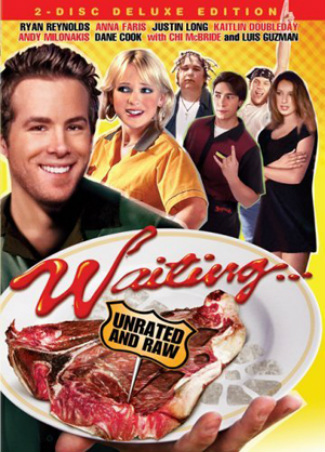 _Tags: commodification, emotion/desire, goffman, theory, arlie hochschild, back stage, dramaturgy, emotional labor, front stage, impression management, presentation of self, 00 to 05 mins Year: 2005 Length: 2:03 Access: YouTube Summary: [Trigger warning: this clip includes explicit language] Waiting is a movie about a day in the life of workers at a casual dining restaurant. This clip can be used to highlight a number of concepts related to Erving Goffman's dramaturgical perspective. For example, in order to avoid disruption and with hopes of getting a bigger tip, the wait staff go to great lengths to manage the impressions that customers have of them. These "front stage" performances are, however, quite different from the "back stage" interactions between the wait staff and cooks. In a separate vein, the clip also highlights Arlie Hochschild's concept of "emotional labor," a concept which she develops in her book The Managed Heart: Commercialization of Feeling. One can see in the clip how the wait staff must go to great lengths to maintain pleasant appearances in the face of rude and unruly customers. Submitted By: Derek Evans (@Dee_Wreck) 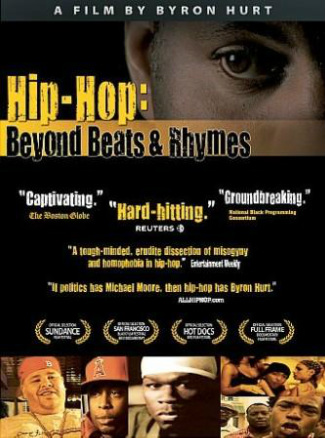 Tags: art/music, commodification, consumption/consumerism, discourse/language, gender, intersectionality, lgbtq, media, race/ethnicity, sex/sexuality, violence, femininity, homophobia, masculinity, media literacy, popular culture, sexism, sexual objectification, stereotypes, subtitles/CC, 21 to 60 mins Year: 2007 Length: 55:31 Access: YouTube (trailer here) Summary: Using his own relationship with hip-hop as a guiding light, filmmaker Byron Hurt presents "HIP-HOP: Beyond Beats and Rhymes, a riveting documentary that tackles issues of masculinity, sexism, violence and homophobia in today’s hip-hop culture. Sparking dialogue on hip-hop and its declarations on gender, HIP-HOP: Beyond Beats and Rhymes provides thoughtful insight from intelligent, divergent voices including rap artists, industry executives, rap fans and social critics from inside and outside the hip-hop generation. The film includes interviews with famous rappers such as Mos Def, Fat Joe, Chuck D and Jadakiss and hip-hop mogul Russell Simmons; along with commentary from Michael Eric Dyson, Beverly Guy-Sheftall, Kevin Powell and Sarah Jones and interviews with young women at Spelman College, a historically black school and one of the nation’s leading liberal arts institutions. The film also explores such pressing issues as women and violence in rap music, representations of manhood in hip-hop culture, what today’s rap lyrics reveal to their listeners and homoeroticism in hip-hop. A “loving critique” from a self-proclaimed “hip-hop head,” HIP-HOP: Beyond Beats and Rhymes discloses the complex intersection of culture, commerce and gender through on-the-street interviews with aspiring rappers and fans at hip-hop events throughout the country." (Excerpt from the film's website on PBS IndependentLens.) Click here for excellent classroom materials and teaching resources, including a discussion guide, video modules, education guide, issue briefs, and more. Additional information also available at www.bhurt.com. Submitted By: Valerie Chepp 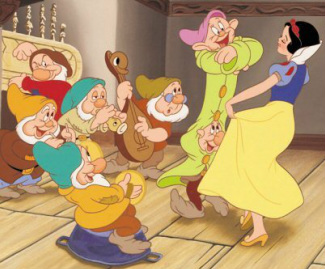 Tags: art/music, capitalism, commodification, consumption/consumerism, media, social mvmts/social change/resistance, theory, creativity, culture industry, frankfurt school, mass production, max horkheimer, theodor adorno, subtitles/CC, 00 to 05 mins Year: 2009 Length: 2:12 Access: YouTube Summary: In their chapter entitled "The Culture Industry: Enlightenment as Mass Deception" from their book Dialectic of Enlightenment, critical theorists Theodor Adorno and Max Horkheimer conceptualize power as an absolute, all-encompassing force, driven at unrelenting speed by the engine of capitalism. They argue that culture is an important site where power in contemporary society is demonstrated; here, cultural productions have transformed from pure art forms to gimmicky imitations in which the aesthetic appeal is now simply a response to consumers' "tastes" and the goal is no longer to evoke truth but rather to merely “entertain.” Horkheimer and Adorno refer to this routinized and commodified feature of contemporary culture as the culture industry. This short montage of various scenes from different Disney movies is one illustration of how cultural products can be seen as an imitation of one another, recycled formulas sold to cultural consumers as entertainment. As an assignment or topic for class discussion, students can be encouraged to cite other examples of interchangeable formulas sold in popular culture through the mass media, which might include formulaic narratives, images, and characters sold through hip hop, action movies, soap operas, romance novels, among many others. Yet, students can also be encouraged to critique Horkheimer and Adorno's totalizing take on the culture industry, as they essentially argue that there is no escape; even when we believe we are freely making choices in the cultural marketplace or, worse yet, even if we recognize the culture industry’s suffocating strength and intentionally try to resist it, our actions and cultural creations have already “been noted by the industry” and become part of the system. Since present-day art is only a vehicle for entertainment and amusement, it is stripped of emotion, tragedy, and truth, and merely exists to appease and distract us. In this state, we are defenseless and unable to resist. As such, the cultural actor “creating” under capitalism’s oppressive rules is (often unknowingly) fated for unoriginal imitation. According to this theory, none of us are actually behaving as individuals and our creations, which are in essence predictable simulations of other commodities circulating in the culture industry, ultimately fuel the engine of capitalism’s absolute power and the monopoly of mass culture. Do students agree that they are cultural dupes and incapable of original artistic creation and innovation? And what does cultural creation and consumption have to do with "resistance" and "distraction"? Distraction from what? Finally, can students think of examples of popular cultural creations that serve to challenge capitalistic power and the status quo? How would Horkheimer and Adorno respond to these examples? Submitted By: Valerie Chepp  Tags: commodification, consumption/consumerism, corporations, education, marketing/brands, advertising, college students, 00 to 05 mins Year: 2011 Length: 5:41 Access: NYTimes.com Summary: This NYT video starts by showing us UNC's inaugural party for incoming freshmen at Target (an American big-box store) where "campus ambassadors" promote corporate brands to their fellow students. At another 50 campuses, American Eagle student representatives help freshmen move into their dorms on their first ever day at college, an iconic and memorable moment to link to corporate branding. As one marketing exec says, "its all about marketing through students as opposed to marketing to students." But what does this mean for university education today? The university, meant to represent intellectual integrity through the pursuit of truth and dissemination of knowledge, is becoming increasingly compromised as budgetary cuts encourage greater reliance on the private sector. The students themselves benefit by gaining work experience, compensation in money and products, and networking (e.g. meeting marketing executives), but are they being manipulated by corporations in the process? Student "ambassadors" in the video report that "when you know companies are not there just to get your money, they're actually willing to help you as an individual in whatever way possible, it makes you respect them a lot more," and that it "feels like what you're doing actually matters." Are these corporations really "willing to help in any way possible" or will they do this only insofar as they have something to gain? A UNC representative notes that they have little control over the commercialization of their campus, and a student advocate for social justice notes that this is "commercialization and materialism at its finest." The video reflects a growing body of research (e.g. The Corporate Campus) documenting the rise of commercialization on college campuses, which offers many excellent readings that can be paired with it. Viewers may be encouraged to reflect on the role of corporations and corporate advertising in society today. How have corporations drawn upon social relationships of trust and legitimacy to further their agenda? How might a Marxian perspective help us understand these processes and what is at stake? Should corporate advertising be banned in certain spaces? Submitted By: Paul Dean 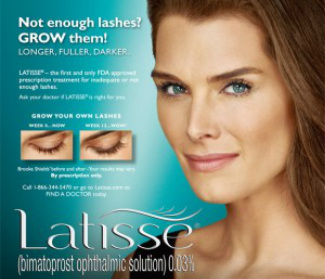 Tags: bodies, commodification, consumption/consumerism, gender, health/medicine, marketing/brands, human diversity, medical sociology, medicalization, 00 to 05 mins Year: 2009 Length: 1:02 Access: YouTube Summary: This commercial featuring actress/model Brooke Shields is for Latisse, a prescription drug approved by the FDA for “inadequate or not enough lashes.” The ad claims that Latisse can be used to treat symptoms of hypotrichosis, a condition characterized by a "less than normal" amount of hair; advertisements for Latisse have appeared in beauty magazines such as Allure. This clip is excellent for teaching students the concept of medicalization, the process by which normal life conditions (such as menopause, childbirth, aging, or death) or issues not traditionally seen as medical come to be framed as medical problems (e.g. alcoholism, eating disorders, compulsive gambling) (Conrad 1992). The Latisse commercial is particularly powerful when shown alongside a typical mascara commercial (e.g., here); while the latter claims to be a cosmetic product and the former claims to treat a “medical problem,” both are clearly targeted toward women and share many similarities -- e.g., promises of “better” (i.e., longer, darker, and/or fuller) lashes, before/after shots, celebrity actress/model spokeswomen, and scenes of attractive women having "fun," suggesting that longer, darker, and fuller lashes can result in happier social lives for women. Moreover, both commercials imply that women, and not men, should be concerned about their eyelashes, even though men can also have sparse, short, and/or light-colored lashes. While the producers of the commercial never say Latisse is developed for use by people with hypotrichosis (this message is only written in a caption at the bottom of the screen), a classroom discussion can underscore the blurring of the medical and the cosmetic in this advertisement. Instructors can point out that the active ingredient in Latisse is used to treat glaucoma. When some glaucoma patients began to notice more prominent eyelashes, they perceived this as a desirable side effect of their glaucoma medication since longer, thicker, and darker eyelashes on women are symbolic of beauty in our culture (Law 2010). Class discussion can then lead to a conversation about human diversity, in which the diversity of eye color and eye shape, as well as the length and thickness of eyelashes, among the world’s population can be examined. The Latisse commercial can prompt students to question whether eyelash hypotrichosis and other medical problems (e.g., andropause, erectile dysfunction, short stature, ADHD) (Conrad 2007) are medical problems or natural human conditions and/or characteristics that create human diversity. Advertisements such as this point to the commodification of such naturally occurring human conditions. Submitted By: Amy Irby 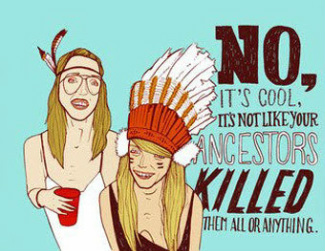 Tags: commodification, discourse/language, inequality, race/ethnicity, cultural imperialism, racism, representation, signification, 21 to 60 mins Year: 2011 Length: 22:50 Access: YouTube Summary: In this clip, Al Jazeera's The Stream interviews Adrienne Keene, who is a member of the Cherokee Nation of Oklahoma, the author of the Native Appropriations Blog, and currently a graduate student in Boston. The clip is useful for examining cultural representation as a practice of domination. At the 2:28 mark, Keene orients the discussion by asking "Who has the right to represent whom?" This orienting question comes up again at the 22:40 mark when the host of the program acknowledges that cultural appropriation contributes to invisibility and marginalization but asks, as a practical matter, how one is to accurately and respectfully represent so many culturally distinct tribes. In her response, Keene denies the premise of the question, which attributes the role of First Nations' representation to non-members, and instead she insists that it must be "the right of the community to represent themselves." Furthermore, while students may counter that representations, such as those used as the mascots of professional sports teams, are forms of appreciation, Keene counters that the such representations are actually "a continuing form of colonialism and oppression." That is, they effectively "shrink an extremely diverse community of over 565 tribes in the United States alone down into one stereotypical image of the plains Indian." By selectively appropriating iconic artifacts from indigenous cultures, while also constructing caricatures said to stand for all indigenous people, one limits acknowledgement of diversity and engages in a practice of domination. For instance, war paint and the war bonnet become blunted as mere fashion statements among hipsters, and may no longer invoke memories of resistance to the genocidal policies of white settlers. Similarly, when the Navy Seals adopted "Geronimo" as a codename for Osama Bin Laden, they threatened to transform the historical meaning and significance of the real Geronimo and his resistance (see this response from a group named 1491s). As with another clip featured on The Sociological Cinema, which is critical of the deployment of photographs of African American lynchings, this clip offers an excellent opportunity for students to examine what is at stake in cultural representation and how it relates to power. Submitted By: Lester Andrist 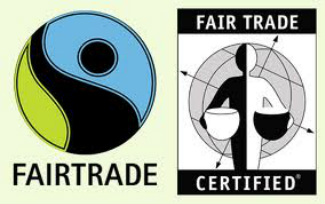 Tags: commodification, consumption/consumerism, globalization, marketing/brands, social mvmts/social change/resistance, coffee, commodity fetishism, conspicuous consumption, consumer culture, ethical consumption, fair trade, sustainability, 06 to 10 mins Year: 2008 Length: 8:41 Access: YouTube Summary: Our consumer culture has been linked to many social problems (e.g. see this documentary on consumerism). As discussed in Marx's theory of commodity fetishism, the social relations of capitalism are obscured in the commodity, and we are largely blind to the sweatshop labor, environmental degradation, and related social problems inherent in the commodity's production and consumption. Ethical and sustainable consumption (e.g. Fair Trade) seeks to address these problems and can be a way to encourage students to think about how their own consumption relates to these problems. This video discusses Fair Trade (FT) through the perspectives of small-scale farmers/producers (how FT has benefited them personally), retailers, the certifier (i.e. Fair Trade USA), and consumers (by focusing on campus groups promoting FT). It can also be used to better understand Marx's concept of commodity fetishism by juxtaposing the "Free Trade" and Fair Trade models (although this video is particularly great to discuss commodity fetishism because it emphasizes the social relationship between producer and consumer). This video emphasizes the power of the consumer to effect change through the products they buy every day, but I also encourage students to think critically about whether we can adequately address these social and environmental issues through consumer activism alone. I also have students explore their consumption using GoodGuide's smartphone app and paired this video with a good introductory chapter on Fair Trade: Kimberly Grimes' (2005) "Changing the Rules of Trade with Global Partnerships: The Fair Trade Movement" in this book (see more readings on FT here). You can also access other Fair Trade films at the Fair Trade Resource Network. Submitted By: Paul Dean 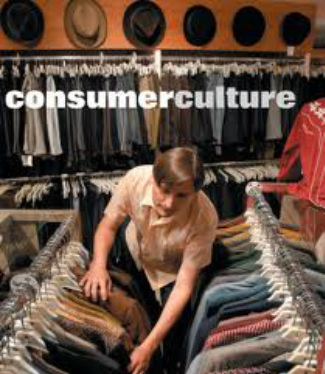 Tags: commodification, consumption/consumerism, marketing/brands, advertizing, conspicuous consumption, consumer culture, emulation, identity, materialism, veblen, 21 to 60 mins Year: 2010 Length: 52:00 Access: no online access (trailer on YouTube) Summary: This documentary offers an excellent overview of consumer culture. In the words of the documentary's creators, this film asks "Are we too materialistic? Are we willfully trashing the planet in our pursuit of things? And what's the source of all this frenetic consumer energy and desire anyway? In a fast-paced tour of the ecological and psychological terrain of American consumer culture .... Taking aim at the high-stress, high-octane pace of fast-lane materialism, the film moves beneath the seductive surfaces of the commercial world to show how the flip side of accumulation is depletion -- the slow, steady erosion of both natural resources and basic human values" with an exploration of the "relationship between the limits of consumerism and our never-ending pursuit of happiness." This video would work great with consumption theories from Veblen to Juliet Schor (who is featured throughout the film). One limitation of the documentary is that while it explores the ecological impacts of consumption, it does not focus on the labor and social issues (e.g. sweatshops) related to the production of the goods that we consume. The film would also work well in combination with videos (such as this video on Fair Trade) and activities (e.g. using a smartphone app to explore consumption impacts) addressing more sustainable consumption to encourage students to think about possible solutions, but also to think critically about whether we can adequately address these social and environmental issues through consumer activism alone. Submitted By: Paul Dean  Tags: commodification, globalization, marx/marxism, coffee, commodity fetishism, ethical consumption, fair trade, 06 to 10 mins Year: 2007 Length: 8:17 Access: YouTube Summary: This short video is made by a Sustainable Harvest, a large Fair Trade coffee importer. The video is a marketing piece for Fair Trade and what the company calls "Relationship Coffee." These are excellent concepts to juxtapose with Marx's concept of commodity fetishism, but this video is particularly helpful (in comparison to other videos I found) because it focuses on telling "the story behind the beans" as a means of showing consumers where their commodity came from, how it was produced, and building a relationship between coffee buyers and sellers. Submitted By: Paul Dean |
Tags
All
.
Got any videos?
Are you finding useful videos for your classes? Do you have good videos you use in your own classes? Please consider submitting your videos here and helping us build our database!
|
 RSS Feed
RSS Feed
